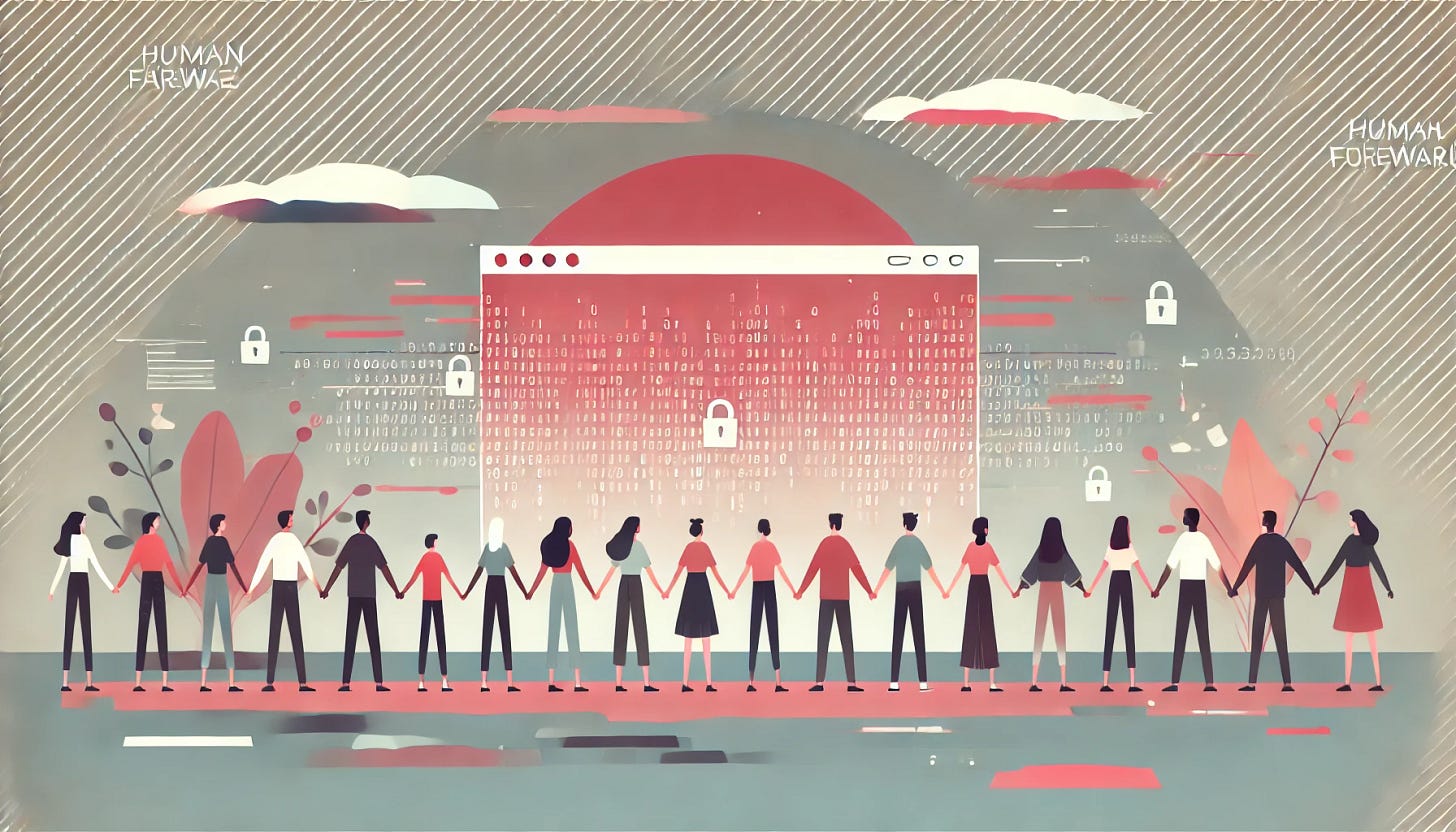Why Technology Alone Won't Save Us: The Human Firewall and Security Culture
The first post in a two part-series on why humans are the weakest link in cybersecurity, and how they could be the greatest asset.
I recently took a course in Cybersecurity Management, and it was a somewhat eye-opening experience. As an engineer, I tend to see engineering problems. The more I dove into the issue of organizations being hacked, the more I realized that my view of the topic was one-eyed. In almost every incident, the origin of the problem is not some technical flaw, but someone clicking on the wrong thing…
So, I continued to read about the topic of Behavioral Cybersecurity and thought I would share some of what I’ve learned. This will be somewhat of a two-part series, starting with an overview of the problem. For the second part, I plan to dive a bit deeper into building a culture of security, including insider threats and training.
It starts with your people
For years, cybersecurity has been framed as a technical arms race: stronger passwords, better firewalls, smarter AI. However, even the most advanced defenses share one unavoidable weakness: people. Human behavior remains the greatest vulnerability in cybersecurity. But here's the flip side: people are also our greatest defense.
This is where the concept of the human firewall comes in. It's a catchy term, but behind the slogan lies an urgent truth: cultivating security-aware behaviors across an organization is just as important as investing in the latest technology. In fact, without a strong security culture, the shared values, attitudes, and practices that shape how people behave, even the best technical protections can unravel with a single careless click.
Why Security Culture Matters
We know from countless studies that technical tools alone can’t stop all cyberattacks. Phishing, social engineering, and insider threats all exploit human psychology, not software bugs. Organizations that focus only on firewalls and antivirus software miss the real point: building a culture where people want to act securely, and where safe behavior is encouraged, supported, and expected.
Recent research shows that a strong security culture isn't just wishful thinking — it's measurable and effective.
In a practical study conducted at a global software company, Dornheim and Zarnekow (2023) employed a structured framework to evaluate six key dimensions of cybersecurity culture: accountability, commitment, perceived importance, policy effectiveness, information handling, and management support. After identifying areas for improvement, such as low accountability and policy confusion, the company implemented targeted changes. Within months, measurable gains in security culture were observed. Employees reported taking more responsibility for security, policies became easier to follow, and overall commitment to cybersecurity grew.
The takeaway? Security culture isn't abstract. With the right approach, it can be assessed, strengthened, and turned into a real line of defense.
It's Not "One-Size-Fits-All"
Changing behavior isn't as simple as hanging posters or running mandatory training. People differ in their attitudes, experiences, and even biases. Treating everyone the same doesn't work.
Two recent studies reinforce this point.
First, Baltuttis et al. (2024) used cluster analysis to identify four distinct cybersecurity behavior types among knowledge workers:
The Naïve Greenhorns, unaware and at high risk.
The Traditional Examiners, cautious but rigid.
The Flexible Mavericks, confident but sometimes careless.
The Reliable Troupers, consistently following good practices.
Interestingly, the study also challenged stereotypes. Older employees were, on average, more resilient to cyber risks than their younger, supposedly more "tech-savvy" colleagues.
Second, Aschwanden et al. (2024) explored employee behavior in small and medium-sized businesses and identified three psychological personas based on cognitive biases:
The Experts, knowledgeable but often overconfident.
The Deportees, disengaged, seeing security as "someone else's problem."
The Repressors, who actively avoid thinking about cyber risks altogether.
In both cases, the message is clear: security awareness needs to be tailored to meet specific needs. Different people need different approaches, whether it's technical training, confidence-building, or simply making security feel relevant to their daily work.
Building the Human Firewall
So, how do we turn these insights into action? It starts with accepting that the "human firewall" is not about blaming employees for being a weak link, it's about empowering them to be part of the solution.
A few principles seem to stand out:
✅ Measure security culture, don't guess. Structured assessments can reveal where your organization stands — and where to focus improvement efforts.
✅ Tailor interventions to real behavior. Not everyone needs the same training. Understanding your workforce — their knowledge, attitudes, and blind spots — makes interventions more effective.
✅ Make security easy, not obstructive. Complex rules and tedious procedures often backfire, prompting people to take unsafe shortcuts. Usable, human-centered security builds better habits.
✅ Leadership sets the tone. Employees take cues from managers. When leadership visibly prioritizes cybersecurity — and practices what they preach — the culture follows.
✅ Acknowledge biases, build resilience. People rely on mental shortcuts. Awareness programs that account for cognitive biases and emotional reactions help close the gap between knowing what's right and doing it.
It's About People, Not Just Tech
Ultimately, technology can only take us so far. The real test of an organization's cybersecurity is how its people think, feel, and act — every day, under pressure, when the phishing email lands, or the rules feel inconvenient.
A strong security culture doesn't happen overnight. But when organizations invest in their human firewall, they're not just plugging gaps — they're building the foundation of true cyber resilience.
For the text part, we will dive a bit deeper into how to build a culture of security, including insider threats and training. On that note, I would also like to refer to one of my earlier posts on the steps each of us can take to increase our digital safety. I believe that it could be helpful to many people.
References
Aschwanden, R., Messner, C., Höchli, B., & Holenweger, G. (2024). Employee behavior: the psychological gateway for cyberattacks. Organizational Cybersecurity Journal, 4(1), 32–50. https://doi.org/10.1108/OCJ-02-2023-0004
Baltuttis, D., Teubner, T., & Adam, M. T. P. (2024). A typology of cybersecurity behavior among knowledge workers. Computers & Security, 140, 103741. https://doi.org/10.1016/j.cose.2024.103741
Dornheim, P., & Zarnekow, R. (2023). Determining cybersecurity culture maturity and deriving verifiable improvement measures. Information & Computer Security, https://doi.org/10.1108/ICS-07-2023-0116
Khadka, K., & Ullah, A. B. (2025). Human factors in cybersecurity: an interdisciplinary review and framework proposal. International Journal of Information Security, 24(119). https://doi.org/10.1007/s10207-025-01032-0
Greavu-Șerban, V., Constantin, F., & Necula, S.-C. (2025). Exploring heuristics and biases in cybersecurity: A factor analysis of social engineering vulnerabilities. Systems, 13(280). https://doi.org/10.3390/systems13040280





